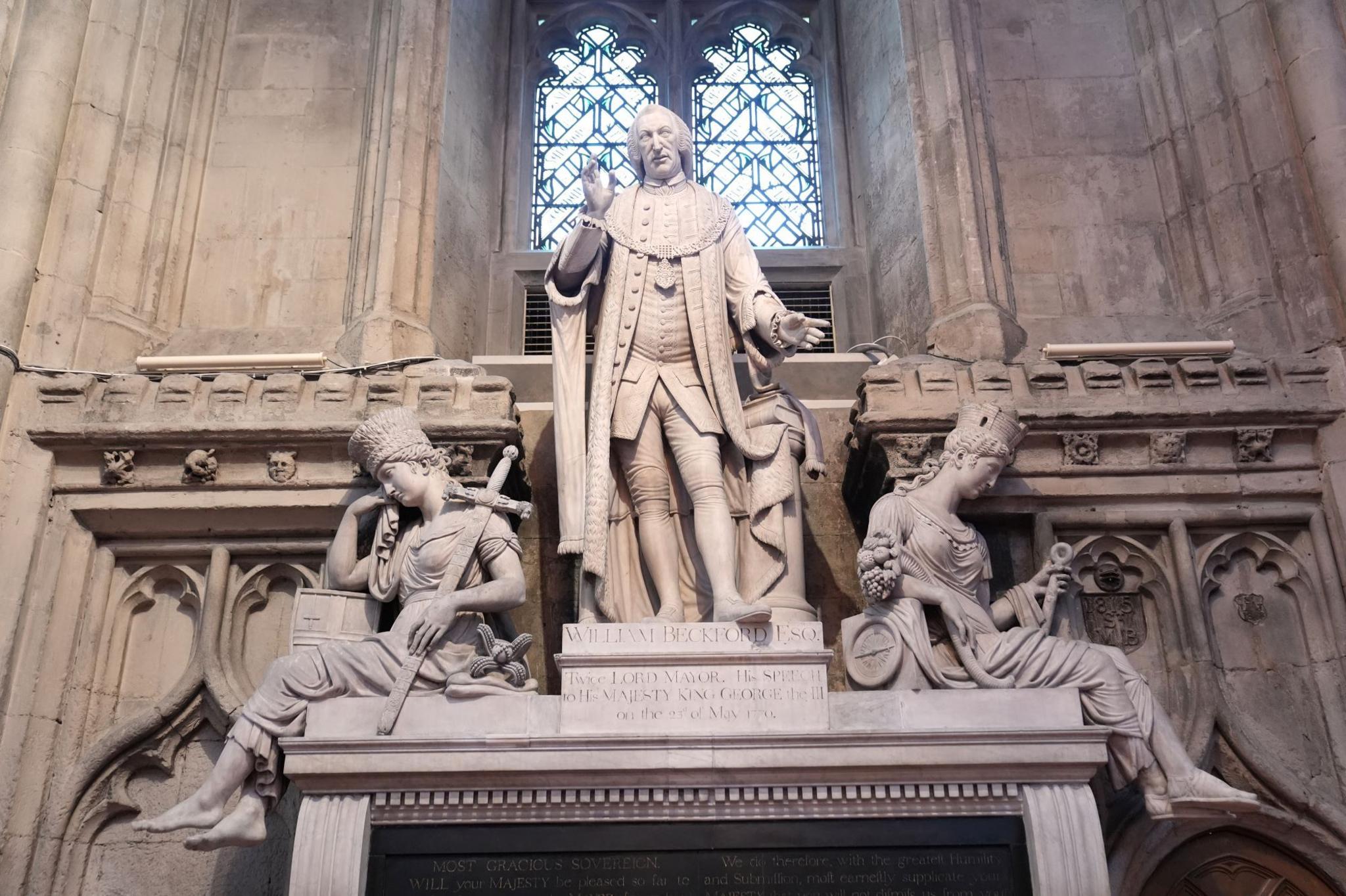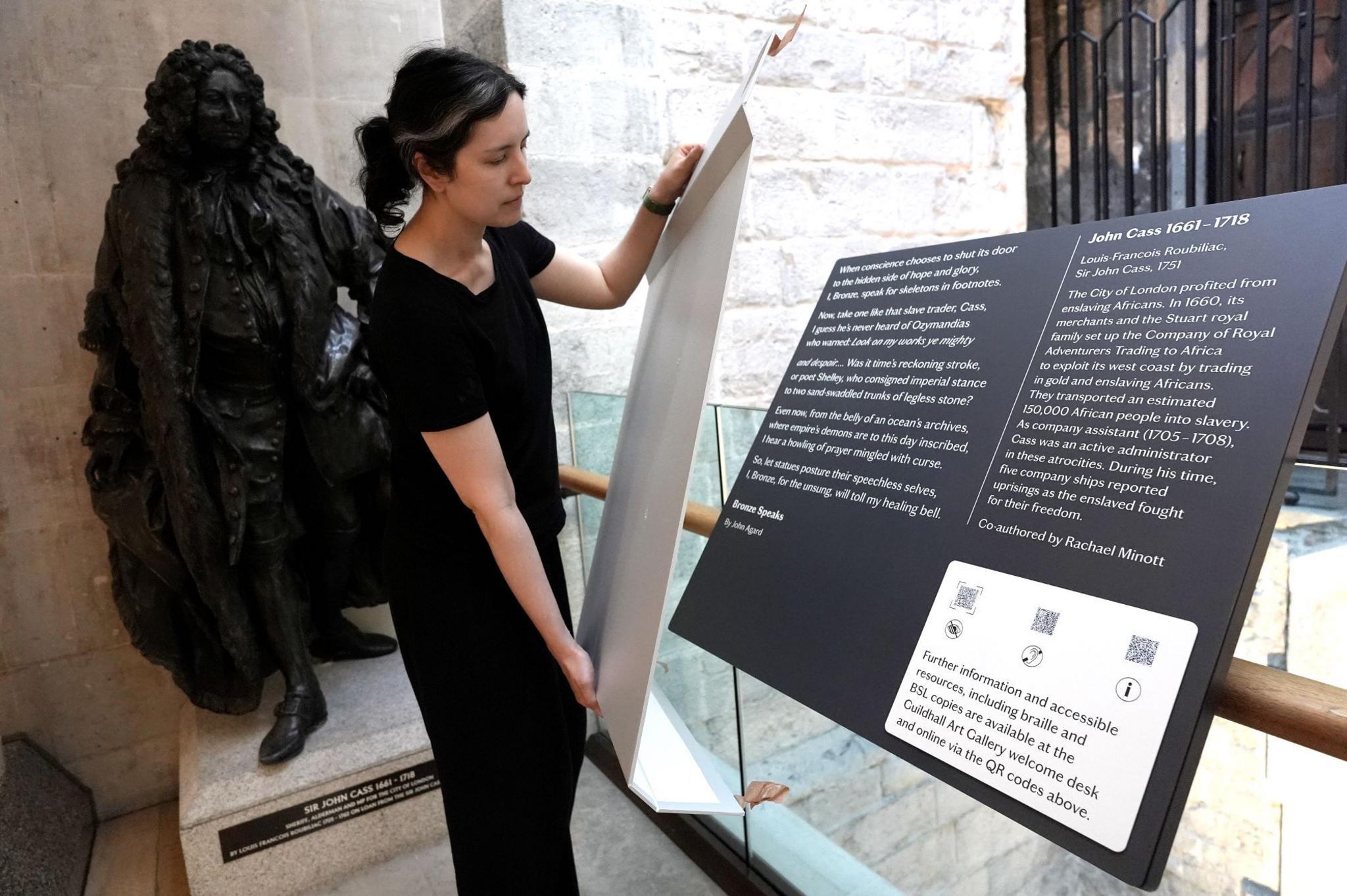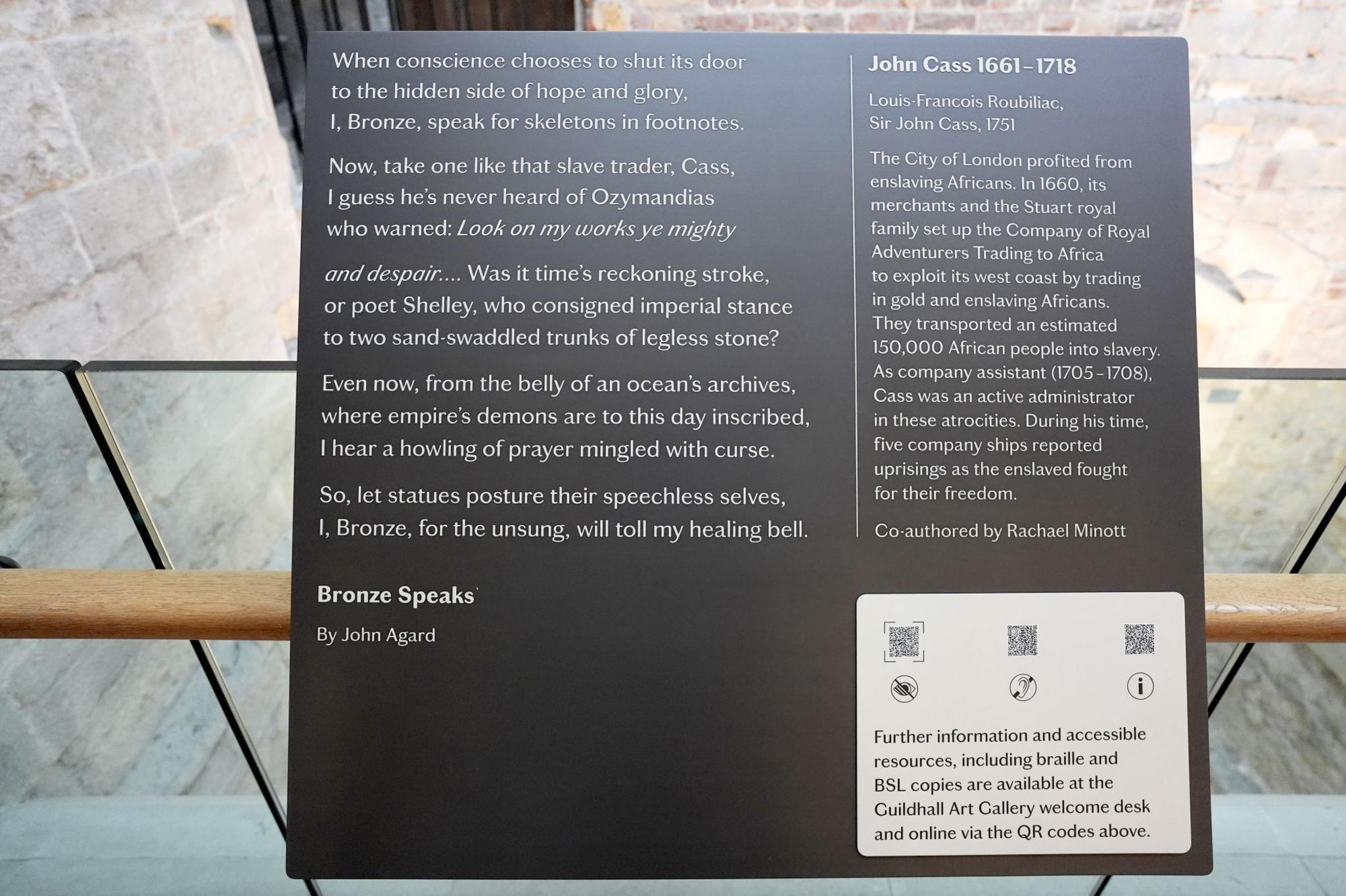Plaques on slave trader statues reveal wrongdoings

A William Beckwith statue adorns the lintel of a Guildhall door
- Published
Plaques have been unveiled on the statues of slave traders in London detailing the "enormous wrongdoings" of the men.
The City of London Corporation launched Revealing The City's Past,, external which is a project to reinterpret the statues of slave traders that include former Lord Mayor William Beckford and former MP Sir John Cass.
The corporation said the plan "reflects a commitment to historical accountability" for its role in the transatlantic trade in enslaved African people.
The Beckford and Cass statues now bear information plates condemning the men's role.

A plaque condemning slave traders is attached to a statue of John Cass
The plaques feature texts by artist and heritage professional Rachael Minott, alongside poems by John Agard and Courtney Conrad.
William Beckford was twice Lord Mayor of London in the late 1700s who accrued wealth from plantations in Jamaica and held African slaves.
Sir John Cass was a 17th and 18th-century merchant, MP and philanthropist who also profited from the slave trade.
In January 2021, the City Corporation had voted to remove the statues but then decided on a "retain and explain" policy that added historical context.

One plaque bears the poem Bronze Speaks by John Agard, who was born in Guyana and came to Britain in 1977
Chris Hayward from the corporation said the project had brought together "many talented people, most importantly, voices from the Caribbean diaspora who have historically been excluded from the narrative".
He said: "The enormous wrongdoings of Beckford and Cass are laid bare by this project, leaving no doubt about the contempt in which these two men should be held.
"Against the wishes of many, these statues remain.
"Here at Guildhall, two slave traders still stand, but we do not stand with them."
City of London statues removed over 'slavery link'
- Published21 January 2021
School changes name 'due to slavery links'
- Published2 September 2020
London slavery statue removed from outside museum
- Published9 June 2020
The head of the corporation's culture, heritage, and libraries committee, Brendan Barns, described the statues as representing "prejudice, cruelty, and greed".
"It cannot be denied that the city's links to slavery are a stain on our history, and we should never attempt to erase or gloss over the past.
Dr Errol Francis, from independent arts and education charity Culture&, said he hoped the work would "go some way towards explaining how London's merchants and politicians were involved in profiteering from the enslavement of Africans".
Listen to the best of BBC Radio London on Sounds and follow BBC London on Facebook, external, X, external and Instagram, external. Send your story ideas to hello.bbclondon@bbc.co.uk, external